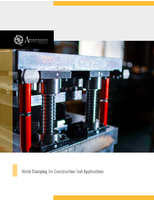Software aids in full flexible body conveyor design.
Share:
Press Release Summary:
 Conveyor Dynamic Analysis Design Program calculates transient belt tensions and velocities during starting and stopping of conveyor. User can input any number of drives, brakes, and pulleys in addition to drive torque/speed curves, delay times, braking torques, flywheels, and inertia effects. User can also view and print 2D and surface plot 3D graphs of tensions/velocities for all points along conveyor.
Conveyor Dynamic Analysis Design Program calculates transient belt tensions and velocities during starting and stopping of conveyor. User can input any number of drives, brakes, and pulleys in addition to drive torque/speed curves, delay times, braking torques, flywheels, and inertia effects. User can also view and print 2D and surface plot 3D graphs of tensions/velocities for all points along conveyor.Original Press Release:
Dymanic Analysis Conveyor Design Program
MOTORSOFT® INC., Lebanon, Ohio, announces the launch of the new Conveyor Dynamic Analysis Design Program. This program allows designers to perform full flexible body conveyor design. The program builds on the strong base formed by the Helix delta-T5 "Static" design program. This new version calculates the transient belt tensions and velocities during starting and stopping of a conveyor. The program allows the user to input any number of drives, brakes, pulleys etc., and allows for input of drive torque/speed curves, delay times, braking torques, flywheels and inertia effects.
After the dynamic calculations have been performed, the user can view and print two dimensional and surface plot three dimensional graphs for belt tensions, belt velocities, strain rates and take-up movement versus time step for al points along the conveyor.
The dynamic calculation process uses sophisticated variable step Runge Kutta method integrators for solving the complex differential equations involved. The dynamic calculations are easy to use and engineers who have static conveyor design experience can perform these complex dynamic simulations using the software.
The program allows users to easily model the belt transient tensions and velocities during starting and stopping of conveyors, view the movement of the take-up pulley during starting and stopping, predict the maximum transient belt tensions at any point along the conveyor, as well as timing these transients.
Dynamic calculation results can be compared with the rigid body static calculations in the delta-T5. The program also allows users to predict the magnitude of transient loads on conveyor structures, calculate the torque loadings on gearboxes and couplings during starting and stopping, and eliminate conditions that may cause equipment failures.
For further information please contact the business office of MOTORSOFT® at 3000 M Henkle Drive, Lebanon, OH 45036, phone (513) 934-4598, fax (513) 934-4599, E-mail- motorsoft@go-concepts.com or go to our website at www.motorsoft.com.




